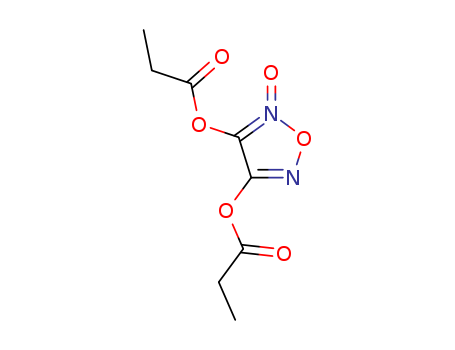- Chemical Name:Diethyl 1,2,5-oxadiazole-3,4-dicarboxylate 2-oxide
- CAS No.:18417-40-8
- Molecular Formula:C8H12N2O6
- Molecular Weight:230.177
- Hs Code.:
- NSC Number:98298
- Nikkaji Number:J1.915.209J
- Mol file:18417-40-8.mol
Synonyms:18417-40-8;diethyl 1,2,5-oxadiazole-3,4-dicarboxylate 2-oxide;diethyl 2-oxido-1,2,5-oxadiazol-2-ium-3,4-dicarboxylate;2-Oxy-furazan-3,4-dicarboxylic acid diethyl ester;Diethyl 2-hydroxy-1,2.lambda.~5~,5-oxadiazole-3,4-dicarboxylate;bis(ethoxycarbonyl)furoxane;NCIOpen2_006486;SCHEMBL9684032;MFCD00184997;NSC-98298;STK689827;AKOS005602182;AS-6220;CS-0315088;diethyl1,2,5-oxadiazole-3,4-dicarboxylate2-oxide;3,4-Bis(ethoxycarbonyl)-1,2,5-oxadiazole 2-oxide;3,4-BIS(ETHOXYCARBONYL)-1,2,5-OXADIAZOL-2-IUM-2-OLATE






